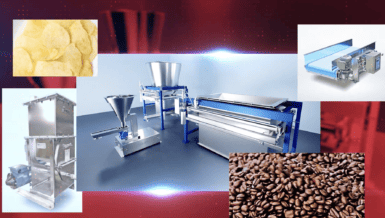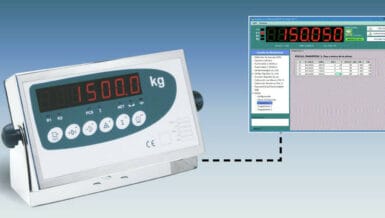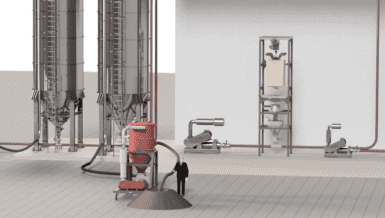Unlike low-viscosity liquids and gases, bulk solids are heavy-flowing materials that make level monitoring difficult, e.g. when bridges form in the material or the material is unevenly distributed in the silo. Some materials also have a fluctuating density, which makes it even more difficult to determine the mass of raw material via the fill level. In such cases, weighing the silo is a particularly good way of ensuring accurate fill level control. Here, the silo stands on load cells and thus records the mass of the material regardless of its position and distribution in the silo.
Since the weighing is integrated into the structure of the silo, the question is how this can be done safely. The scale becomes part of the structure and therefore also of the static structure, which requires separate consideration of the statics. In order to simplify this process, SCAIME has developed solutions that make it easier for the user to realize the weighing in all steps of the project.

Planning and construction
During the planning and construction phase, the statics of the silo are designed or checked in such a way that the safety of the entire construction is not compromised and optimal weighing results are achieved.
Particularly important here are:
- Dead load of the silo
- Capacity in tons, or volume and specific weight of the material
- Ambient conditions: Standing inside/outside
- Wind loads and resulting forces
- Special conditions such as earthquake zones or hazards to people
In the planning phase, pre-calculated statics of the silo are used to determine the required safety forces for the assembly kit and the load cells.
Installation

When installing any industrial system, it is important that it can be done smoothly, quickly, and safely. Labor time on site is costly and stopping the installation in case of problems must be avoided. To simplify the installation process, SILOSAFE weighing kits are equipped with various features to ensure a smooth process:
- The SILOSAFE mounting kits can be mounted without load cells. This is important because after mounting the mechanics, welding work often has to be carried out which can damage the load cells electrically.
- No so-called dummy load cells, i.e. load cells without function, are necessary to ensure mechanical integrity. This feature saves costs and time.
- To install the load cells, simply insert them into the mounting kits. The silo can then be lowered onto the load cells via an integrated lowering function of the SILOSAFE load kits. Static safety is permanently ensured during this process by the mounting kit.
Operation and maintenance
Load cells R10X offer weighing capacities from 1t to 100t. They are designed in IP68 protection class and are therefore fully encapsulated. The load cell can be replaced in the SILOSAFE mounting kit without interfering with the mounting kit and thus the construction of the silo. During this process, the safety of the silo is constantly guaranteed by the mounting kit.

Even more convenient is the exchange of measuring lines for load cells with M12 connectors. Here, the measuring cable can be replaced without having to remove the load cell. A 6-wire connection compensates for different cables and cable lengths. Another advantage of a connector on the load cell is the use of special cables, e.g. for optimum compatibility with chemical substances.
Compliance with EN 1090
In Europe, the Construction Products Regulation (N°305/2011) states that the load-bearing elements of metal structures of buildings placed on the market must comply with the EN1090 standard and be CE marked. In the context of silo weighing, SILOSAFE kits can be considered in applications subject to the EN1090 regulation as follows:
- The building owner defines a performance class (EXC) to which the manufacturer must respond according to the type of building and the human and material risks in case of failure.
- Depending on the performance class, the EN1090 standard describes the design, manufacturing, and implementation requirements applicable to the product
To meet this requirement, SCAIME has had its quality system certified to EN1090 in performance class EXC2. This class implies that the entire process, from product design to delivery, must be covered by a qualified and documented QM system.
An EN1090-certified installation kit of class EXC2 provides the assurance:
- The existence of a quality documentation system
- The existence of a non-compliance handling procedure
- Load capacity dimensioned according to the EN1993-1 standard
- Traceability of the materials used
- Product meets specifications
- Manufacturing by qualified welders and workers









































